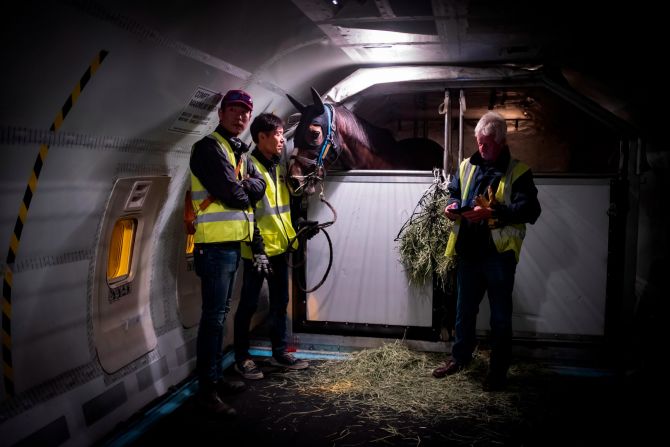
Equine air travel has transformed the horse racing industry, with the world's fastest competitors now able to race all over the planet. It has also widened breeding programs with stallions able to cover mares from different countries. Pictured is Japanese star Deirdre arriving at Dublin Airport ahead of her run in the Irish Champion Stakes. (Credit: Racing Post)

The horses are monitored by a staff of specialized groomsmen which includes a vet. Together they keep the horses safe and monitor the animals through the flight. Pictured is Kataniya leaving an Antonov An-74 at Dublin Airport. (Credit: Racing Post)

The horses are loaded onto travel containers which are wheeled on and off cargo planes. An average container can hold up to three horses at a time but owners can splash out on a more luxurious ticket which gives their animal more room, the equivalent of business or first class.

Horses may have to attend quarantine before and after taking the flight to apply with a country's regulations. Up to 85 horses can be loaded onto a typical plane.

"We monitor the horse extremely carefully and make it as easy as possible. We find that most horses actually take the journey very well," says Jim Paltridge of specialist horse transport company IRT.

Champion Australian race horse Black Caviar wore a special compression suit during her 30-hour journey from Melbourne to London. No expense was spared for the celebrity mare traveling in a $50,000 first-class airborne stable.

Long before air travel was the norm, horses were transported by ship. However this came to a halt in 1972.